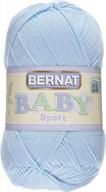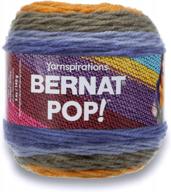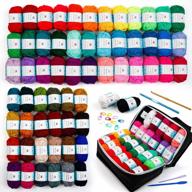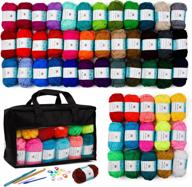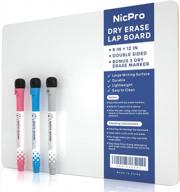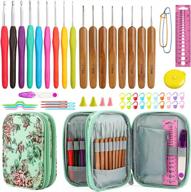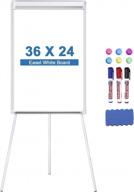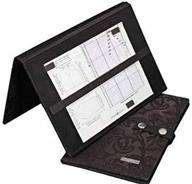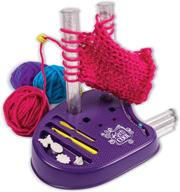Another interesting products
Finding The Perfect Knitting Pattern For Your Skill Level
When you're new to knitting, it can be tricky to find patterns that match your abilities. Knitting uses specific skills and techniques, and not all patterns are created equal when it comes to difficulty level. Finding the right pattern for your skill level will help ensure success with your knitting projects.
Similar products
Evaluate Your Knitting Skills
Before starting your search, take an inventory of the knitting skills and techniques you have under your belt so far. Consider aspects like:
- How comfortable are you with basic stitches like knit and purl?
- Can you do more advanced stitches like cables or lace?
- How about colorwork techniques like stranded knitting or intarsia?
- Are you familiar with garment construction and shaping?
- Have you worked projects in the round before?
Be honest about your experience level. The more detailed your self-assessment, the better able you'll be to find appropriate patterns.
Look For Patterns Labeled By Skill Level
Many knitting patterns and books include a skill level or difficulty rating to help you choose patterns. Here's a rundown of common skill levels:
| Skill Level | Definition |
|---|---|
| Beginner | Uses basic stitches, with minimal shaping or construction |
| Easy | Includes basic stitches and simple construction |
| Intermediate | Uses a variety of stitches and techniques with detailed shaping |
| Experienced | Includes advanced stitchwork and construction methods |
Browse patterns labeled for beginners or easy skill levels when starting out. As your skills progress, you can move on to intermediate and experienced patterns.
Top products in 🧶 Knitting Patterns
Read Pattern Details Thoroughly
Don't just go by the skill rating - read through the full pattern details before casting on. Look for information on:
- The specific skills, stitches and techniques required
- Any unfamiliar terms or abbreviations explained
- The steps for construction and finishing
- Type of yarn suggested
- Any special tools or notions required
Make sure you understand what is involved and feel confident you have the necessary abilities before committing to a pattern.
Try A Pattern Swatch First
When possible, create a swatch using the pattern stitchwork before starting the full project. This gives you a chance to try out new skills on a small scale first. If the swatch proves too tricky at your current level, find a different pattern. Don't be afraid to challenge yourself, but make sure you choose patterns that will set you up for success.
With a methodical approach to evaluating patterns, you can find knitting projects perfectly suited to helping you advance your skills as a beginner or intermediate knitter.
Must-Have Knitting Patterns For Beginners
Just starting on your knitting journey and not sure where to begin? Have no fear! There are plenty of easy, beginner-friendly knitting patterns that will help you learn the basics while creating a finished project you can be proud of. Here are some of the top must-have knit patterns for beginner knitters.
Scarves
Scarves are one of the best first projects for beginner knitters. They allow you to practice basic stitches like the knit or purl stitch to create a simple, rectangular shape. Popular beginner scarf patterns include:
- Garter stitch scarf - Alternating rows of knit stitches create this classic texture
- Stockinette stitch scarf - Knit on one side, purl on the other for a smooth face and bumpy back
- Striped scarf - Switch up colors every few rows as you learn to join new yarn
Washcloths
Washcloths are another super simple beginner project. Typically small and square shaped, they allow you to get familiar with basic stitches before moving onto larger projects. Some good patterns include:
- Grandma's favorite washcloth - Uses only garter stitch for a thick, durable cloth
- Squared washcloth - Practice stockinette stitch in a small format
- Cotton cabled washcloth - Try your hand at simple cable designs
Cowls
Cowls are essentially very wide, continuous scarves that don't require as much shaping knowledge. Great for beginning knitters, cowl patterns like these are a fun next step:
- Simple ribbed cowl - Alternate knit and purl stitches to create a textured ribbed fabric
- Quick cowl for beginners - Knit in the round with bulky yarn for a fast cowl project
- Braided cable cowl - Only uses basic stitches but creates a cool braided look
Simple Hat
Once you've gotten the basics down, try your hand at a simple knitted hat, like:
- Easy rolled brim hat - Knit a rectangle then seam and top with a pom pom
- Quick bulky knit beanie - Uses bulky yarn for a hat you can finish in a weekend
- Straightforward stockinette cap - Finish off with some decreasing for a tapered top
Cozy Cowl-Neck Sweater
When you're feeling confident with your skills, try your hand at knitting your first simple sweater. Look for cowl-neck patterns that don't require much shaping expertise. The Forest Path Pullover is a popular free Ravelry pattern for beginners.
Starting with simple starter patterns like these helps you get comfortable with knitting basics before moving onto more advanced techniques. Don't be afraid to take it slowly and ask for help from experienced knitters - happy knitting!
How To Choose The Right Yarn For Your Knitting Project
Choosing the best yarn for your knitting project will help ensure you are happy with the finished results. The options can seem endless, but following some guidelines can make yarn selection much easier.
Consider Fiber Content
The fiber that makes up the yarn affects properties like drape, warmth, and durability. Here are some top options:
- Wool - Warm, breathable, and durable. Choose wool yarn for garments and accessories.
- Cotton - Absorbs moisture well. Ideal for dishcloths, washcloths, and summer accessories.
- Acrylic - Budget-friendly and machine washable. Good for beginner practice projects.
- Alpaca - Extremely soft and lightweight. Perfect for delicate shawls and blankets.
Pick the Right Weight
Yarn weight, or thickness, dramatically affects the drape, structure, and size of your finished project. Some common weights include:
| Yarn Weight | Good For |
|---|---|
| Lace | Light, airy shawls and garments |
| Sport | Socks, light accessories |
| Worsted | Hats, scarves, sweaters |
| Bulky | Thick, cozy accessories and garments |
Check the label for the recommended knitting gauge to determine weight. Swatch if possible to ensure your gauge matches.
Consider Color
Variegated and hand-dyed yarns add beautiful color variation. For solid color projects, buy all your yarn together to ensure consistent dye lots. Opt for superwash wools or machine washable fibers if you want your colors to stay true over time.
Factor In Texture
Different yarn textures like bouclé, thick-and-thin, and brushed mohair can create interesting fabric and stitch definition. Be sure to select patterns that highlight the yarn’s texture.
Mind Your Budget
Natural fibers like wool and alpaca can get pricey. Acrylic and cotton yarns offer cheaper alternatives. Also look for:
- Synthetic blends containing small amounts of wool or alpaca for softness at lower cost.
- Shopping sales at online retailers or local yarn stores.
Swatch Before Committing
Work up a swatch with your chosen yarn and pattern stitch before buying all your supplies. Check that you like the fabric and your gauge is correct. Swatching first helps ensure yarn and pattern suitability.
Choosing the perfect yarn has a huge impact on your finished knits. Keep these tips in mind, and you'll be picking knitting yarns like a pro in no time!
Tips For Reading & Following Knitting Patterns
Knitting patterns can seem like another language at first glance. Thankfully, with some tips on decoding the key components and a bit of practice, you'll be expertly following patterns in no time.
Get Familiar with Common Abbreviations
Knitting uses many standardized abbreviations to save space. Get to know some of the most common ones:
- k = knit
- p = purl
- st(s) = stitch(es)
- tog = together
- rep = repeat
Keep a printed list handy as you learn. Understanding the abbreviations will help instructions make sense.
Read All Directions Before Starting
Don't just jump right into the first row. Read through all the introductory pattern sections first for useful information on:
- Yardage, supplies, tools needed
- Stitches or techniques used
- Pattern notes and special instructions
- Size and gauge specifications
Knowing what's required and how the pattern is constructed will prepare you to tackle it confidently.
Use Stitch Markers and Row Counters
When working more complex patterns, use handy tools like:
- Stitch markers - Mark important stitches like pattern repeats
- Row counters - Track what row you're on
- Cable needles - Hold stitches when working cable twists
Read Charts Carefully
Charted colorwork or lace patterns use symbols to depict stitches. Double check the chart legend and follow chart rows from right to left. Highlight completed rows to avoid losing your place.
Make Notes As Needed
Mark up more complex sections with your own notes. You may want to:
- Circle or highlight repeat instructions
- Write stitch counts for sections
- Note where shaping increases or decreases occur
This helps cement the pattern in your mind and gives handy references.
Check Your Work Frequently
Counting stitches in each row helps catch any mistakes. Also compare your knitting to pattern photos to ensure accuracy. Fixing errors right away keeps them from compounding.
Try a Practice Swatch First
Knitting a gauge swatch is hugely helpful before starting a big project. You can get familiar with:
- How the stitch pattern looks
- The yarn's texture
- If you achieve the right gauge
Mastering pattern reading is a skill learned over time. Be patient, utilize available resources, and your knitting skills and confidence will grow exponentially.
Knitting Pattern Websites
There are many knitting patterns available that range from classic designs to modern twists. Here are some examples:
Whether you're a beginner or an experienced knitter, there are many knitting patterns available that can help you create beautiful and unique projects.
Knitting Sites Like Ravelry
There are many websites available for knitting patterns, both free and paid, that are similar to Ravelry. Here are some of the most popular ones:
- Lovecrafts: Lovecrafts is a website where you can find both free and paid knitting patterns. It is an easy option for many designers, as you can upload patterns directly or import from Ravelry. They also offer a wide range of yarns and other supplies.
- Lion Brand Yarn: Lion Brand Yarn is a website where you can find more than 3,000 free knitting patterns. They have categorized their yarns so that it’s very easy to substitute a yarn featured on a pattern to another. They also support a wide range of indie designers.
- KnitPicks/WeCrochet: KnitPicks/WeCrochet is another yarn and pattern destination site unique to the KnitPicks yarn brand. Independent designers can submit their patterns to the site as long as the project uses KnitPicks yarn. Patterns have to be quality-approved by the KnitPicks team. They also offer a program called Independent Designer Partnership (IDP), where designers make 85% of the pattern selling price.
- Etsy: Etsy is a website where you can find many independent designers selling their knitting patterns. You can find both free and paid patterns, and you can also find unique and one-of-a-kind designs.
- AllFreeKnitting: AllFreeKnitting provides a directory of free knitting patterns, tips and tricks for knitters, along with tutorials and how-to videos.
- Yarnspirations: Yarnspirations is a website that offers a wide range of knitting patterns suitable for novice, intermediate, and advanced knitters. They also offer quality equipment and kits for better results.
Whether you're a beginner or an experienced knitter, these websites offer a wide variety of knitting patterns to choose from, similar to Ravelry.





